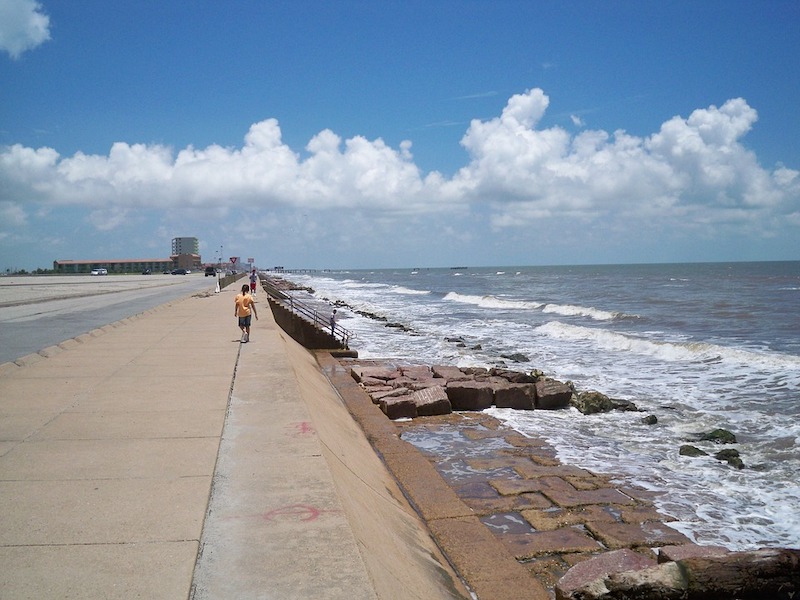A plan being developed by the Texas General Land Office and the U.S. Army Corps of Engineers would spend as much as $32 billion to protect the Houston-Galveston area from storm surges.
The project would construct the nation’s most ambitious and expensive coastal barrier system. It would consist of 12-foot-high sand dune-topped levees to protect beachfront homes and businesses as well as a storm surge barrier system.
The plan has already gone through revisions to make it more effective and more environmentally friendly. The plan has drawn criticism from the Galveston business community which says a proposed ring levee would hinder cargo and passenger loading at the Port of Galveston. Environmentalists are concerned that a gate system between Galveston and Bolivar to block storm surges would diminish exchange of saltwater and freshwater between Galveston Bay and the Gulf of Mexico that is important to marine life.
The Houston-Galveston region, home to millions of people and the nation’s largest petrochemical complex, is vulnerable to massive storm surges and currently has no comprehensive storm protection system.
Related Stories
Codes and Standards | Sep 16, 2020
Heat pumps are the future for hot water
Sustainability policies will drive trend.
Codes and Standards | Sep 15, 2020
Taller timber buildings approved in National Fire Protection Association code
Ensures compatibility with the International Building Code.
Codes and Standards | Sep 14, 2020
Relocation of neighborhoods, the next step in U.S. flood strategy, is underway
Repeated rebuilding after successive floods now seen as bad policy.
Codes and Standards | Sep 10, 2020
Fannie Mae programs provide incentives for multifamily solar
Affordable housing projects can find PV installations to be cost-effective.
Codes and Standards | Sep 9, 2020
Corporate pledges accelerate net-zero building movement
World Green Building Council drives goal of net-zero carbon emissions by 2050.
Codes and Standards | Sep 8, 2020
Study will examine elevator airflow amid COVID-19 pandemic
Researchers to investigate risk of airborne transmission.
Codes and Standards | Sep 4, 2020
Updated selection, application guide for plastic glazed skylights, sloped glazing released
Part of suite of skylight documents by Fenestration and Glazing Industry Alliance.
Codes and Standards | Sep 3, 2020
Turner Construction takes strong stand against racism
Shuts down work sites for anti-bias training.
Codes and Standards | Sep 2, 2020
California releases guide for state water policy
Water Resilience Portfolio is roadmap for meeting water needs as climate changes.
Codes and Standards | Aug 31, 2020
Fenestration alliance updates fenestration sealants guide
First update to 2009 document.

















